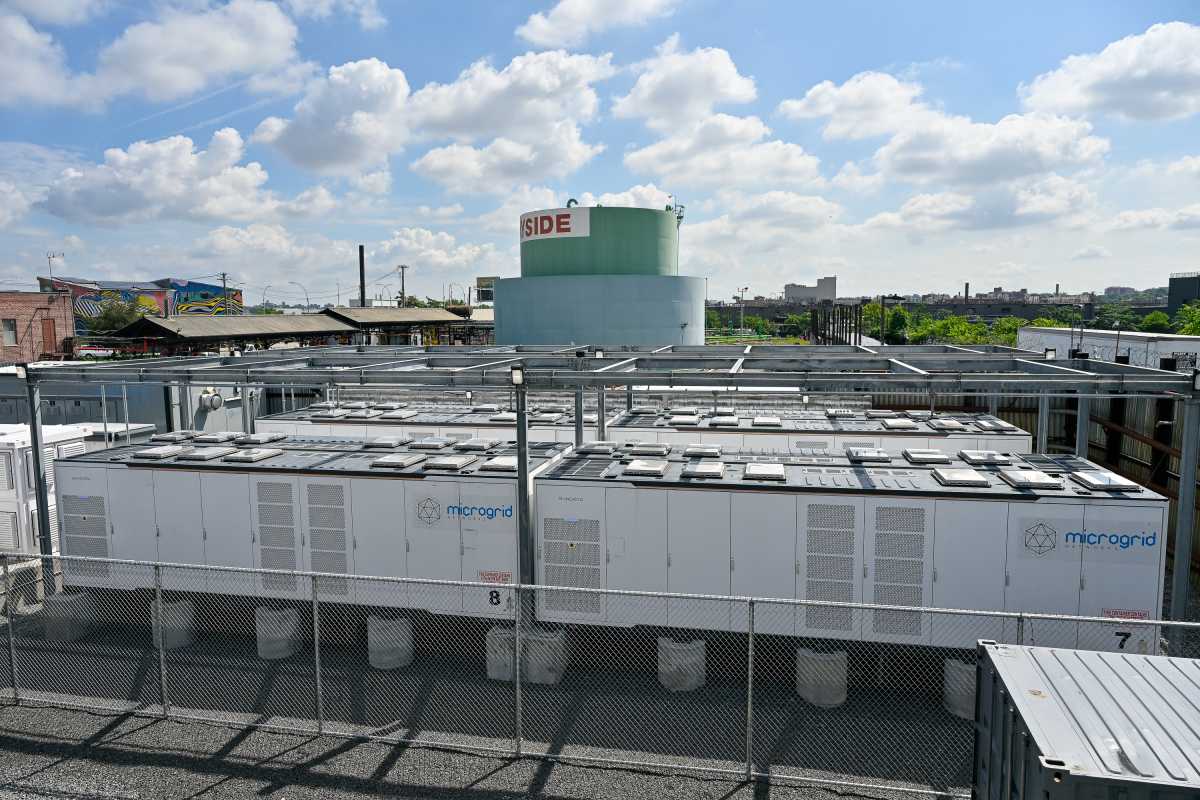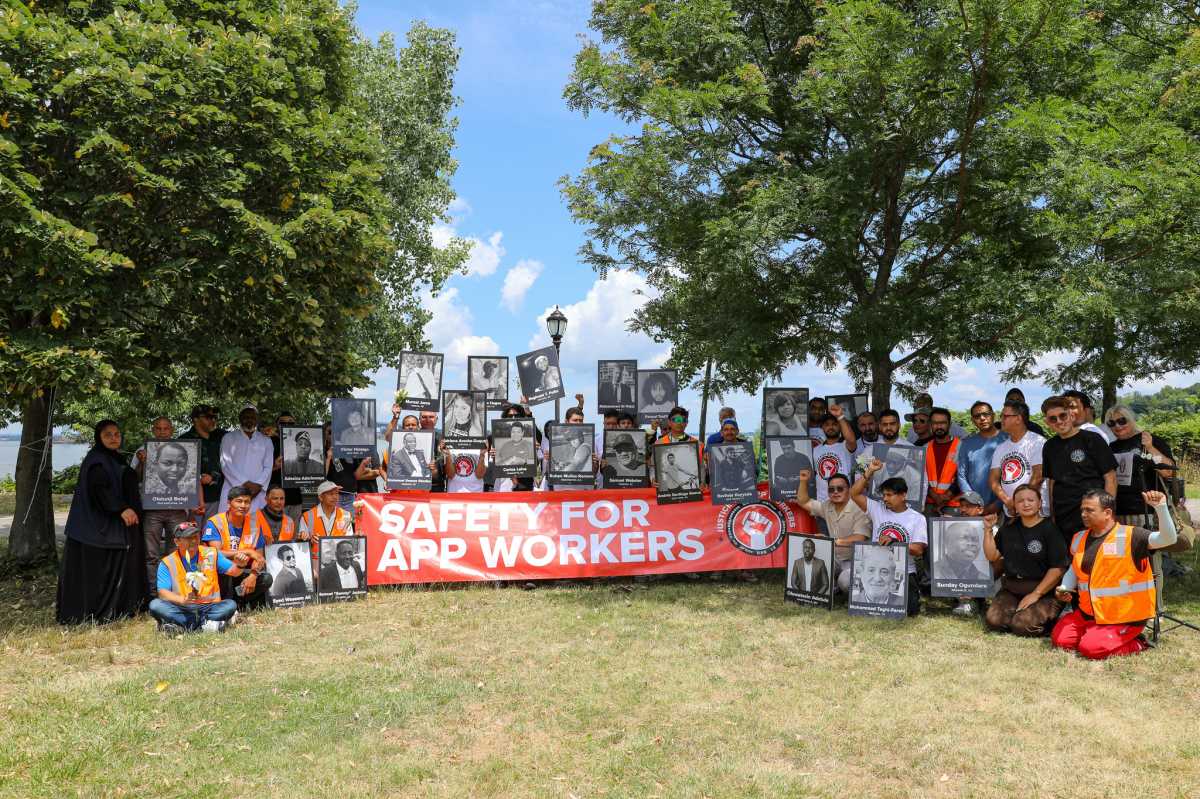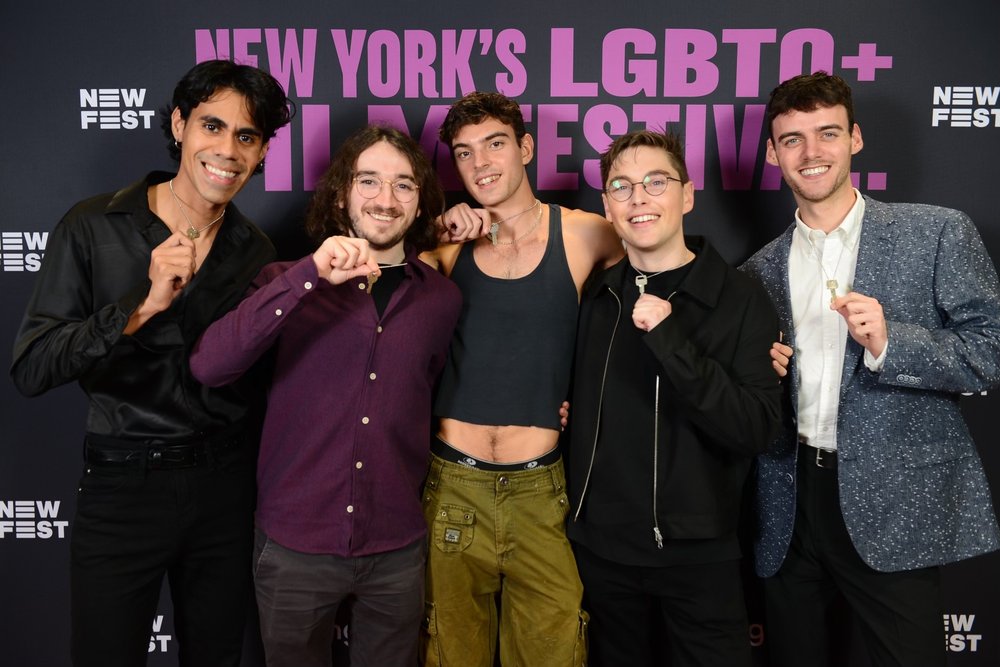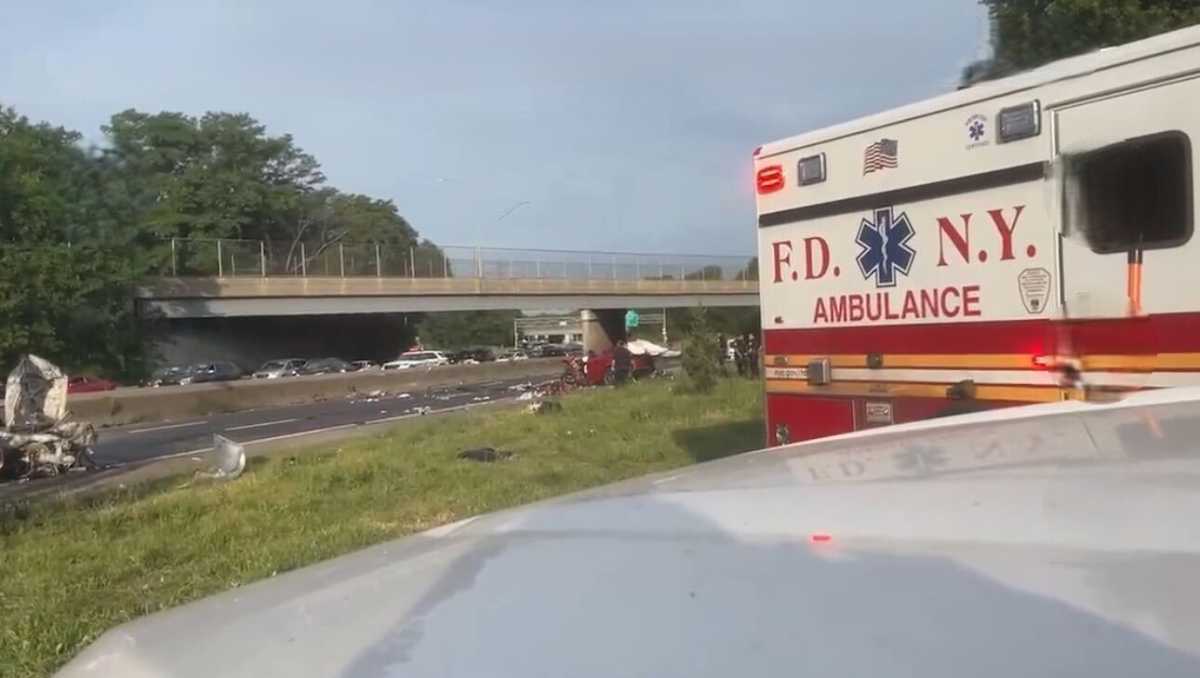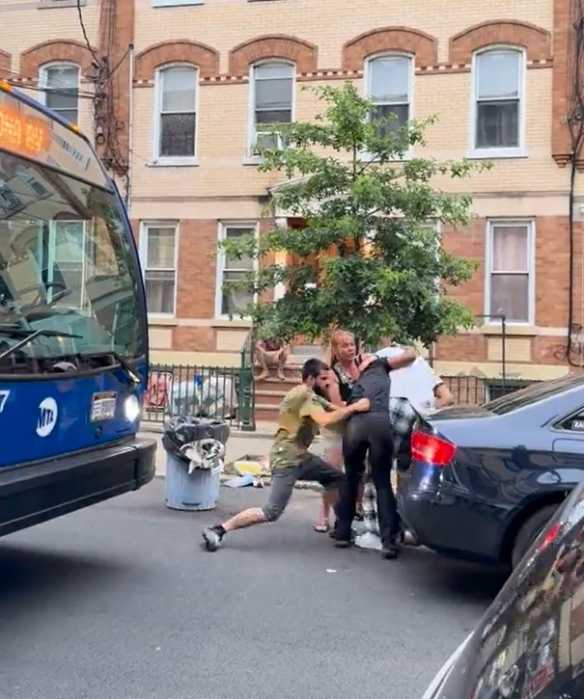By Julie Shapiro
Parents who have spent the past year fighting against school overcrowding paused briefly for a bit of good news last week, then plunged directly back into the battle.
The mood at Assembly Speaker Sheldon Silver’s taskforce on overcrowding was festive last Thursday when Silver introduced the principals who will lead Lower Manhattan’s two new K-8 schools. But the taskforce spent the majority of the meeting listening to sobering numbers suggesting the two new schools will not be enough.
“We don’t want to sound like we’re never happy,” said Tricia Joyce, a P.S. 234 parent who has been vocal about overcrowding. “But unfortunately, we’re so far behind the 8 ball, we’re really several years late.”
While the discussion of future overcrowding continues, the more immediate question for many parents is where they will send their children next fall. The Dept. of Education is giving all parents of entering kindergartners the opportunity to rank their choices — they can either apply for their zoned school, which is P.S. 89 or P.S. 234, or they can apply for either of the new schools: P.S./I.S. 276, opening in Battery Park City in 2010, and the newly named Spruce Street School, likely opening in the Beekman St. tower in 2011.
Both new schools will start their kindergarten classes next fall in an incubator in Tweed Courthouse on Chambers St. If P.S. 234 and P.S. 89 fill up, then students who live near the two new schools may be zoned for the incubator regardless of the parents’ choice.
But although the application process started earlier this month, most parents have not seen the space at Tweed or met the two new principals, who just got the job last week. The Ross Global Academy currently occupies Tweed, and the principal is concerned that tours will be disruptive, said Will Havemann, D.O.E. spokesperson.
Learan Kahanov, a Seaport resident who doubts his son will be able to get into kindergarten at P.S. 234 next fall even though the preschooler is currently zoned for the Tribeca school, said parents are thirsting for more information.
“To be able to see the classrooms and speak to the principals, find out what their philosophies are, would ease a lot of minds,” he said.
Kahanov hopes many parents will put the new schools as their first choice, so they can form a community and start focusing on making the schools successful, but that won’t happen unless parents get more information, he said.
Havemann, the D.O.E. spokesperson, said the city is scheduling open houses with the principals in February, but he was not certain parents would be able to tour Tweed.
Speaker Silver’s office has tentatively scheduled an opportunity for parents to meet the principals and tour Tweed on the afternoon of Thurs., Jan. 29.
Terri Ruyter, principal of P.S./I.S. 276, said she was not worried that parents will be dissuaded from choosing her school or the Spruce Street School if they can’t see Tweed.
“I’m confident we will have no problem filling seats in either school,” she said.
Ruyter said she understood the Ross school not wanting crowds of parents coming on tours.
“We shouldn’t just create a whirlwind when kids are trying to learn,” she said. “We have to prioritize children learning.”
Julie Johnson, principal of Ross, could not be reached for comment.
Havemann said Ross, a charter school that has been in Tweed for three years, would move to E. 12th St. next fall, a building shared with the East Side Community High School. Ross is moving into space vacated by the Urban Assembly School of Business for Young Women, which is moving to 26 Broadway in the fall.
As the two new schools get closer to opening, one detail that fell into place this week was their names.
New principal Nancy Harris settled on the name “Spruce Street School” for what had been known as the “Beekman school.” Her choice was primarily practical: The school’s entrance is on Spruce St., not Beekman St., and District 2 already has a school with Beekman in the name. Several parents said they like the ring of the new name, which calls to mind a small-town schoolhouse.
“I agree that it sounds very quaint,” Harris said. “It’s alliterative, it’s unique and it helps the school create its own identity.”
Less clear is the future name of P.S./I.S. 276, which Ruyter called the Battery Park City School in her proposal. Ruyter said she wasn’t attached to the name and didn’t know if it was official. For now, she is happy to call it P.S./I.S. 276.
Carolyn Happy, co-president of the P.T.A. at P.S. 89, suggested picking a name for the city’s first green school that would draw on Ruyter’s background in social studies. The name could reference the area’s geography, framed by the Hudson River, or its Dutch and Native American history, Happy said.
Naming a school doesn’t guarantee that the name will be used. P.S. 89, the Liberty School, and P.S. 234, the Independence School, are rarely known by anything but their numbers.
The new schools also have phone numbers and e-mail addresses. Parents can reach P.S./I.S. 276 at 718-935-3599 and bpcschool@gmail.com, and the Spruce Street School at 718-935-3601 and sprucestreetschool@gmail.com.
While questions about the new schools abound, the focus at Silver’s taskforce meeting last week was on the overcrowding that could still be on the way.
Eric Greenleaf, the P.S. 234 parent who compiled data on Downtown population growth, put it bluntly: “We need more space.”
Greenleaf said the kindergarten classes at the two new schools would be full when they open, leaving no space for the population boom underway in Lower Manhattan. The incubator next fall will have six kindergarten classes, two for the Spruce Street School and four for P.S. 276, and the schools’ new buildings will not be able to fit any additional kindergarten classes in future years.
While school capacity will stay the same, Greenleaf, a professor of marketing at New York University’s Stern School of Business, expects the number of children who want a space in the schools to swell.
In 2003, 565 babies were born in Lower Manhattan, which resulted in 330 children entering kindergarten last fall, or 58.4 percent, Greenleaf said. Those 330 kindergarteners stretched Downtown’s schools beyond capacity, with P.S. 234 and P.S. 89 managing to squeeze in a total of six extra kindergarten classes. The new schools are designed to take a total of six kindergarten classes, perfectly matching the current need.
But the problem, Greenleaf said, is that the need will continue to grow. In 2007, 824 babies were born in Lower Manhattan, and Greenleaf expects that 58.4 percent of them, or 481, will want to attend kindergarten in the fall of 2012. That is 151 kindergarteners more than the neighborhood had last fall — enough kindergarteners to fill six additional classes after filling both the new and existing schools.
“This is based on kids who are already here in strollers in Washington Market Park, not projections of kids who might be born,” Greenleaf said.
Greenleaf then accounted for another factor: the many families with young children moving into the neighborhood. Using data on new apartments and conversions below Chambers St., Greenleaf made a conservative estimate that an additional 42 students per year will be entering kindergarten in Lower Manhattan over the next six years. The projection is based on the 8,600 apartments where construction began between 2006 and 2008.
Between the rising number of births and the new construction, Greenleaf thinks the number of extra kindergarteners in the neighborhood will soon approach 200 a year.
“It’s pretty obvious that there isn’t capacity for these kids,” Greenleaf said.
Lisa Ripperger, principal of P.S. 234, called Greenleaf’s analysis “eye-opening.”
“I find his numbers sobering,” Ripperger said. “But it doesn’t worry me — I don’t allow myself to be worried.”
Ruyter, the P.S./I.S. 276 principal, said she trusted the city to respond to the data.
“I’m sure they are taking this into consideration and coming up with a plan,” Ruyter said.
Havemann, the D.O.E. spokesperson, said the city had already looked at Greenleaf’s numbers and saw no need to act.
“We do not anticipate that we will need extra, additional school space in Downtown Manhattan,” Havemann said. “However, if that changes, we have a process for accommodating that change.”
Kahanov, the Seaport resident whose son may attend the Spruce Street School, is worried that the city’s inaction will hurt the quality of the school.
“We don’t have the luxury of the Downtown Community Center next door to us,” Kahanov said, referring to the overflow space P.S. 234 got in an adjacent community center. Kahanov said he would hate to see the Spruce Street School open with beautiful art and science facilities, only to see them turned into ordinary classrooms within two years to accommodate the overcrowding.
Greenleaf mentioned one potential solution that he and others see as less than ideal: The city could move the middle school part of the new K-8 schools to a separate building and fill the new buildings with just elementary schools. Nancy Harris, principal of the Spruce Street School, said the K-8 model would be an important part of her school’s identity and she wouldn’t want to lose the middle school.
A potential location for middle school seats is in 26 Broadway, where the D.O.E. has space for 250 students starting next fall. The D.O.E. will make an announcement about those seats within the next few weeks, Havemann said.
Another possibility that would give a little relief would be to eliminate the pre-K program from the two new schools to make room for other classes. Havemann said the D.O.E. would make a final decision on pre-K next year once they see how many kindergarten applications come in.
But what parents really want is not another last-minute temporary solution but a long-term plan — which means building more new schools.
Joyce, the P.S. 234 parent said, “Band-Aids are much more expensive, inconvenient and stressful than planning ahead and building something affordable and functional.”








